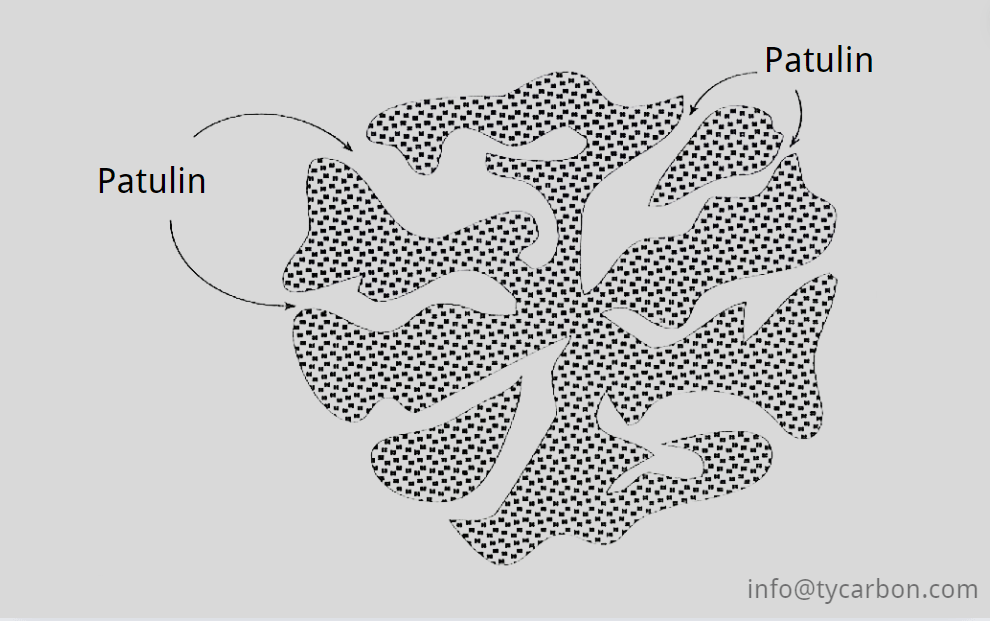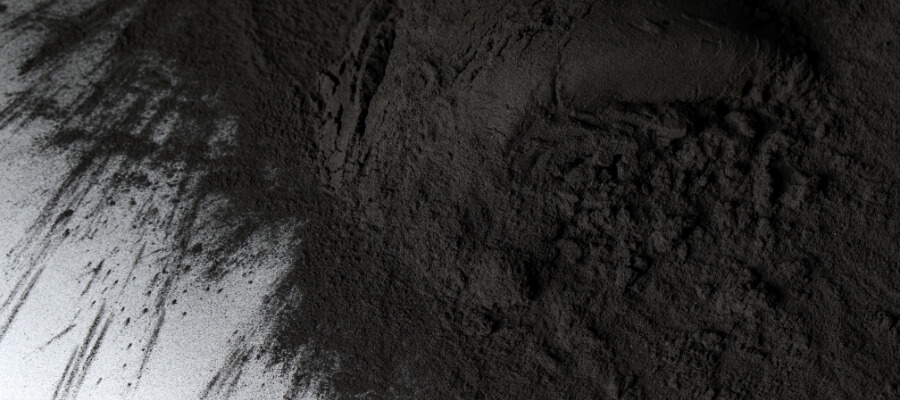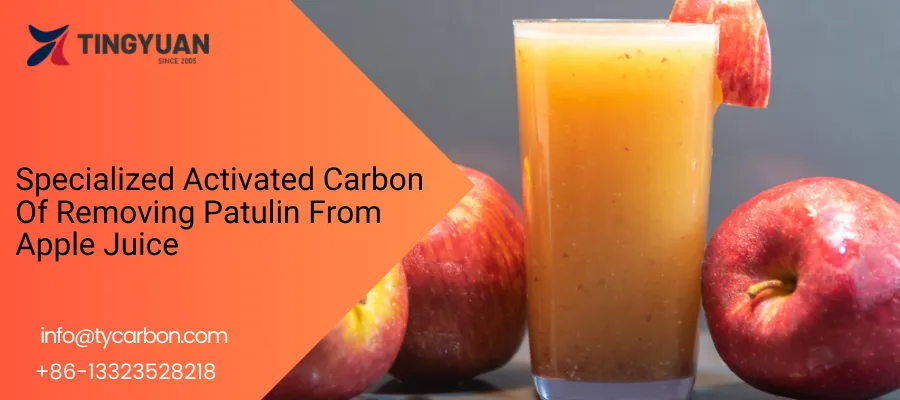Apple juice is widely popular for its sweet taste, unique flavor, and abundant nutritional value. It contains various vitamins, minerals, and antioxidants, which have positive effects on enhancing immunity, promoting digestion, maintaining heart health, and resisting oxidative stress.
However, apple juice may contain patulin, a toxin harmful to human health. It is a toxin that is carcinogenic, teratogenic, and mutagenic to animal cells. Therefore, for manufacturers, removing patulin from apple juice is extremely important.
This article will provide a detailed understanding of activated carbon’s role in removing patulin by introducing the sources and health hazards of patulin, two methods for removing patulin, the use of activated carbon adsorption for patulin removal, and how to choose suitable activated carbon.
Sources and Hazards of Patulin in Apple Juice

The fundamental source of patulin in apple juice is the toxin-producing bacteria, which grows and produces toxins on apples, a process that occurs mainly during the storage period of apples, and which is difficult to avoid in general apple juice production plants.
Patulin is a toxic fungal metabolite that primarily damages the central nervous system, as well as exhibits renal and gastrointestinal toxicity, carcinogenicity, teratogenicity, mutagenicity, and immunotoxicity.
Given the significant health risks patulin poses, its removal from apple juice is crucial. But how can it be removed? Please continue reading.
Two Methods for Removing Patulin
The methods for reducing the content of patulin in fruit juices can be summarized in two ways:
- Chemical degradation
- Physical adsorption
Due to the limitation of production cost and addition amount, chemical degradation method is not widely used in actual production, compared with physical adsorption method, which is more promising.
Physical adsorption relies on the adsorption capacity of the adsorbent material to remove patulin from juice.
Commonly used adsorption materials include activated carbon, adsorption resins, and modified adsorbents. Among them, activated carbon adsorption is the most common method for patulin removal.
Next, I will explain why activated carbon is the most commonly used method for removing patulin.
Activated Carbon Adsorption for Patulin Removal
Activated carbon possesses strong adsorption capabilities, effectively adsorbing a large amount of pollutants and impurities, including patulin. With an extremely high surface area, it provides numerous adsorption sites, efficiently removing patulin.
Activated carbon adsorption is a physical purification method that does not involve chemical reactions, thus preserving the chemical composition of apple juice, aiding in maintaining its original flavor and nutritional value.

Adsorption with activated carbon has the following advantages:
- Cost-effectiveness: Activated carbon is a relatively economical adsorbent, offering high cost-effectiveness suitable for large-scale industrial applications.
- Environmental friendliness: Activated carbon is a naturally sourced material that can be regenerated through a recycling process, reducing waste generation and environmental pollution.
- Simple operation: The activated carbon adsorption process is simple to operate, easy to control, and adjustable to optimize the adsorption effect to achieve different removal rate requirements
- Versatility: Besides removing patulin, activated carbon can also decolorize juice, adsorb other harmful impurities, showcasing its multi-functional characteristics.
Although activated carbon adsorption offers the aforementioned advantages, its limitations should be noted. It may adsorb certain nutrients and flavor substances in apple juice, adversely affecting its flavor. Therefore, careful control of process conditions is necessary in practical applications to ensure product quality and safety.
Now that we understand activated carbon’s effectiveness in removing patulin, how do we choose the most suitable activated carbon? Please Keep reading below.
How to Choose Suitable Activated Carbon?

Selecting the appropriate activated carbon for removing patulin from apple juice requires a systematic experimental and optimization process. By choosing activated carbon with high surface area and suitable pore structure, and optimizing process parameters such as dosage, stirring time, temperature, and pH, patulin can be effectively removed, ensuring the safety and quality of apple juice.
We offer specialized powdered activated carbon for removing patulin from juice, which effectively reduces patulin content.
Moreover, our company holds NSF certification, as well as KOSHER and HALAL certifications. These certificates prove that our products comply with international standards across the entire scope and can meet the needs of different regions and cultures.
Below are the experimental data conducted by Professor Li, our activated carbon technology expert


The data shows that activated carbon dosage has the greatest impact on patulin removal rate, followed by treatment time, and treatment temperature has a smaller effect.
The optimal treatment conditions for patulin removal are 3g/L activated carbon at 60℃, stirred at 300 r/min for 5 minutes. Under these conditions, the removal rate of patulin in apple juice can reach 69%.
Ready to Purchase Activated Carbon?
Professor Li, our company’s activated carbon production technology expert, has been deeply involved in the application of activated carbon for decades, possessing extensive experience. Our company has developed specialized activated carbon for removing patulin.
If you need to obtain product quotations or technical support, please contact us. Need quick contact? Click on the email or phone below
- Email: info@tycarbon.com
- Whatsapp: +86-13323528218

